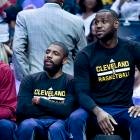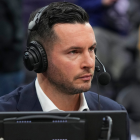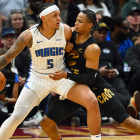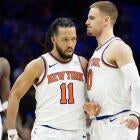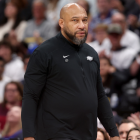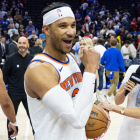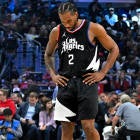Download the CBS Sports App today and get instant NCAA Tournament news and alerts, plus get the latest picks and upsets from SportsLine!
After the Warriors sat three starters against the Spurs on March 11 (in the same game where LaMarcus Aldridge and Kawhi Leonard were out with health issues and Kevin Durant also sat out with his knee injury), there were grumblings about the NBA’s problem of teams resting players late in the year.
When LeBron James and the Cavaliers rested against the the Clippers on March 18 (another nationally televised Saturday showcase game), it became a national hot topic. Everyone is mad. Fans that paid premium prices for a game that didn’t feature Cleveland’s stars, TV partners who were there to broadcast it, and fans that wanted to see two of the best teams in the league go at it. It sparked a discussion that ranges from saying the NBA system is broken (too far) to LeBron James being weak (which is silly), to wondering if the league should reduce the number of games (we’ll get to that). Here’s everything you need to know about the NBA’s scheduling controversy.
This situation is unfair to the fans
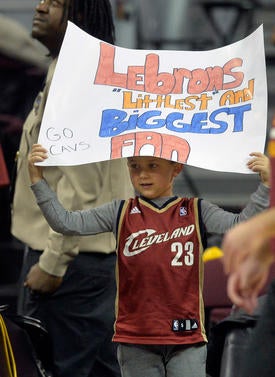
NBA ticket prices are exorbitant, considering how many games there are in the schedule versus the entertainment you get. Most of the time, you’re being bombarded by obnoxiously loud arena pop and constant giveaways while for 20 minutes a game a backup point guard dribbles the life out of the ball. But fans love those rare moments when they see the world’s best basketball being played, so they pay a pretty penny. For teams to then turn around and deny them those marquee players is cruel.
The NFL puts its team logos on tickets and promotional materials. You go for the team. It’s tribalism. The NBA is marketed differently. You start by following players. That’s how young fans get into it. They have a favorite player. You can love a quarterback or a linebacker, but those players are only on the field half the time. Baseball players have only a handful of real actionable moments in every game. With basketball, you’re drawn to those players.
The league knows this (and we’ll talk more about this in a bit). They’ve been saying, “It’s a player’s league” since David Stern helped guide the league to mainstream popularity with Michael Jordan in the 1980s and ‘90s. But this conundrum stands in contrast to that. No one is paying ticket prices, parking fees, or getting gouged by concessions to watch Ramon Sessions, or even Marcin Gortat or Luc Richard Mbah a Moute. You come to watch the great players. The fans’ complaint is legit.
The TV networks have a legit complaint
Nine years, $24 billion. The 2013 budget shutdown of the United States government was projected to cost the country the same amount that the league has gotten from its TV partners for the rights to their programming. That nine-year deal is worth more than the GDP of 86 nations.
I’d be pretty upset, too.
There’s the actual contract between those sides, but there’s also an implicit contract that goes into place. There are courtesies extended. The two provide promotional opportunities for the league at every turn. They are good partners and sink in thousands of dollars in production to these events.
There are two problems here, between players resting, and players resting on marquee games
The national uproar is not there if the Warriors sat Steph Curry against the Sixers on a random Tuesday game that was only available on League Pass. It’s there because they sat Curry, Klay Thompson, and Draymond Green all at once against the Spurs on a prime time Saturday night matchup, and then the Cavaliers rested Kyrie Irving, Kevin Love, and LeBron James the following Saturday game vs. the Clippers. It’s resting multiple guys at once, and resting them in a big game.
Fans want to see those big games. They are pivotal moments in the season. The Warriors and Spurs are battling for homecourt throughout the playoffs, and yet Golden State basically punted that game. But if you’re going to side with the disappointed fans who were snubbed the last two Saturdays, you need to stay consistent when it comes to random games that aren’t nationally televised. And if you’re upset because of the TV product, you need to look at the other games -- like the weeknight games on TNT, where teams regularly play on back to backs.
No one thinks this is a great situation
Adam Silver and the league office, smartly, aren’t bitterly defending the product or trying to make this into a non-story. There’s no rug-sweeping. The NBA, by and large, is massively successful and does things the right way. Even in this situation, they know they’re having to navigate a complicated set of principles. While the language in Silver’s memo to the owners Monday night was stern, and warned of penalties, consider this quote from All-Star weekend from USA Today:
“I do recognize, though, that there isn’t an easy solution to that problem, and I’m sympathetic to fans who turn out -- whether they buy tickets to games or watching games on television and don’t see their favorite player on the floor,” he told reporters. “But we also have to be realistic that the science has gotten to the point where there is that direct correlation that we’re aware of between fatigue and injuries.
“And as tough as it is on our fans to miss one of their favorite players for a game, it’s far better than having them get injured and be out for long periods of time. So, we’re always still looking to strike that right balance.”
The NBA is not tone-deaf on this and, they’re working on a solution. So while everyone’s upset with the league, and again, understandably so, it shouldn’t be a contentious issue. Both sides want to get it right.
The only real “solution” to this problem is off the table, so you might want to accept this to some degree
Eighty-two games is too many. That’s the cold, hard truth, and everyone, everyone in the NBA knows it. The league knows it, the owners know it, the players know it, the coaches know it, the arena staffs know it, and most of the fans, if they’ve ever stopped to think about it, know it. Yes, it provides a good sample size and yes, it provides a smorgasbord of entertainment. But you can’t fit 82 games into a six month span without having bunched up schedules, especially when you have to account for pre-scheduled concerts and arena events.
A 60-to-70 game schedule would fix this, and make the games better. Again, everyone knows this. But guess what? That means teams make less money, and so the league makes less money, and the players make less money, and no one is going to sign up for that. It is a non-starter. It’s why you don’t hear that much from players about what is an obvious solution. Because they know how it works. It should be noted, however, that the league still got its TV cut of the two games where the Warriors and Cavs sat out players, the arenas still got their money, the tickets were still sold, and the players still got paid -- even those who rested. You’re paid by your availability for games, not for your participation in them, and tickets are simply priced for the cost of entry to the event, not a guarantee of the entertainment within them.
The good news is that ...
This won’t be as much of a problem next year
The league cut down on the number of back to backs this year, and we’re seeing maybe the best offensive season since the 1970s, with spectacular statistical performances night after night. Next year, they’re moving the season back a week, cutting the number of preseason games, and spreading out the season more. So there will be even fewer. This won’t be such a big deal, and you can bet that the league will make not scheduling these marquee games on back-to-back nights a priority.
That doesn’t solve the non-marquee games being on back to backs, and back to backs aren’t the only reason teams rest players. But it’s a start. Speaking of ...
Here’s why this didn’t used to be a problem, and now it is
Understandably, older players scoff at this stuff. If they were able to go, they played. Period. This didn’t happen. This sparks a whole conversation about toughness and today’s game, and that’s a little boring and pedantic to talk about. We get it, you’re a bunch of tough guys. Cool. But part of the changes are just about science. Guys would play in the 8’0s and ‘90s with torn ligaments, strains, sprains, fractures, in part because the technology didn’t exist to accurately discover them upon testing.
Likewise, training staffs have started collecting biometric data which gives a clearer picture of the fatigue players are suffering. If a player is “in the red,” as one coach told me, then he sits. If he’s not, then he doesn’t. It’s as simple as that for some teams. Having more data does not mean that teams are softer, it means that those teams back then lacked the perspective necessary to make the same decisions.
This is often not the player’s call

LeBron James wanted to play against the Clippers. Steph Curry has said he wanted to play before. These calls are made by coaches under advisement from the training staffs. That’s how this works, most of the time. Yes, there are times when a player needs a break; LeBron James took two weeks off two years ago to go get right in Miami. He was having knee issues, sure, but it was pretty clear he could play.
Sometimes, a player sits when he can play because he’s got free agency coming up, or because he’s just done with the team. This stuff happens. But most of the time, it’s not the call of the player. That needs to be mentioned. That’s not a toughness issue, that’s a “my coach told me I’m not playing, so I’m not playing” issue.
Check your hypocrisy
I’m fine if you think every player that’s healthy should play in every game. I don’t agree, but that’s fine. But you can’t say every player should play in every game, and then say “all that matters is what you do in the playoffs.” You can’t crush players for resting in the regular season and then crush them for getting tired in the playoffs if they wear down. You have to pick a side. These guys get paid tens of millions, and playing through discomfort or exhaustion is part of the deal, but the entire point is to be ready for a (hopeful) three-month playoff run. Something’s got to give.
The coaches need cover here
LeBron has done a great job speaking on this issue. He’s basically said that his coach has to do what’s best for the team and its championship hopes first. And he’s right. He also called out what he feels is hypocrisy of talking about the Spurs resting guys versus when he sits out, even though he didn’t want to.
LeBron James had an interesting take on the NBA's rest issue (via @clevelanddotcom) pic.twitter.com/a5N1Kw2f3L
— Dime on UPROXX (@DimeUPROXX) March 21, 2017
Now, the league fined Popovich when he rested players three years ago before a major game against Miami. There was outrage then. And James is only the focal point now because it’s two weekends in a row where a marquee game has gone down the drain. However, his latter point is spot-on. Tyronn Lue doesn’t have the same kind of clout to get past this, but it’s ultimately the coach’s call. Coaches have to deal with enough pressure from fans, owners, front-office personnel, agents, and players that they shouldn’t have to stress over getting their top talent -- who they need more than anyone -- a breather if it’s the right thing to do.
Solutions
This is a tough situation, one that’s improving, and the conversation will likely only lead to better solutions. One idea might be to actually allocate 3-5 five rest days in the year, and if a team exceeds that, they face a penalty. That way fans know how likely it is that a team will be resting guys. Also, maybe don’t schedule all the marquee matchups in the final two months of the season like the NBA does. Yes, the NBA has to give the NFL and college football space in the fall. But there’s still room to spread some of these games out so that they’re not all bunched up at a time when teams are just trying to get to the finish line in one piece.
Fans will still watch marquee matchups, especially with how the league has grown the past few years. There’s room to space those games out more.
But in the end, the schedule is going to be best. There’s been talk of backing up the start of the year to the start of October, shortening preseason (which is useless) even more, and stretching the back half of the season out to July, putting the draft in the first week of July and free agency throughout the rest of the month. That gives the league only two real months, August and September, off, but if they’re not going to shorten the season, it may be the only real way to get the game where everyone seems to want it.













